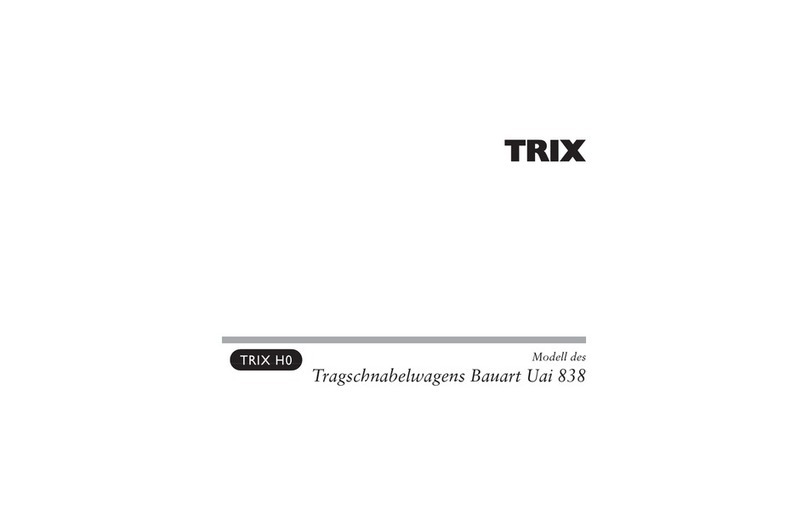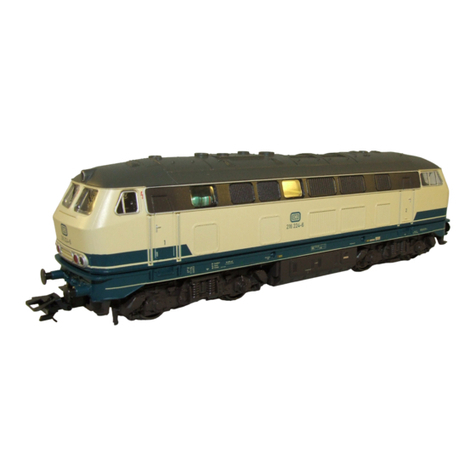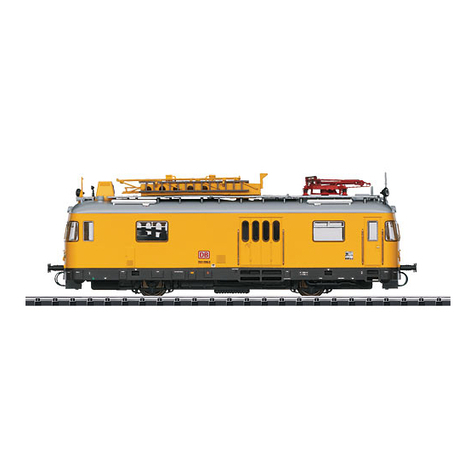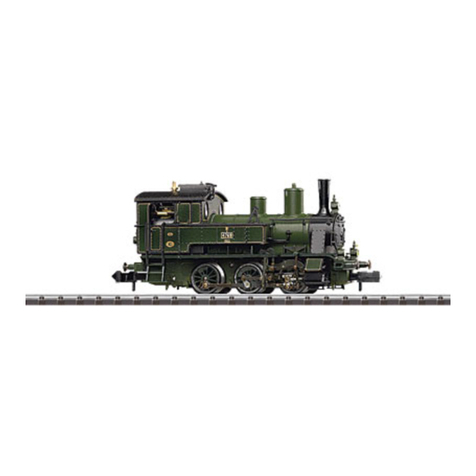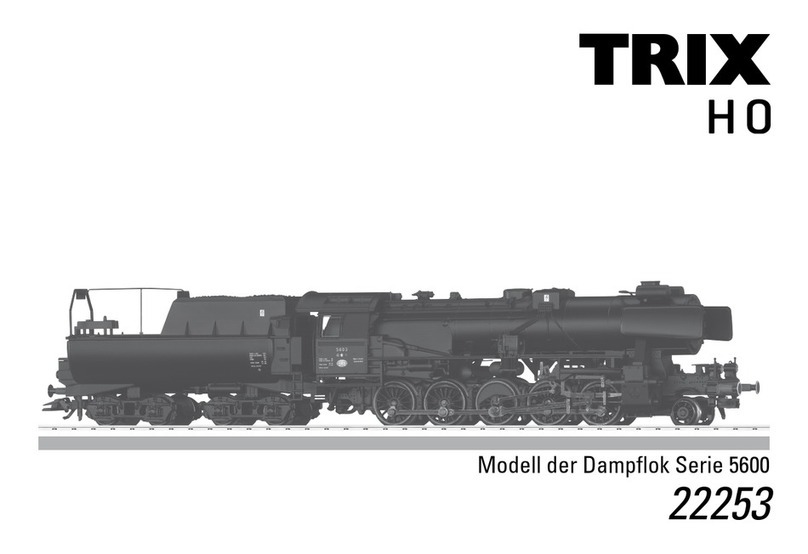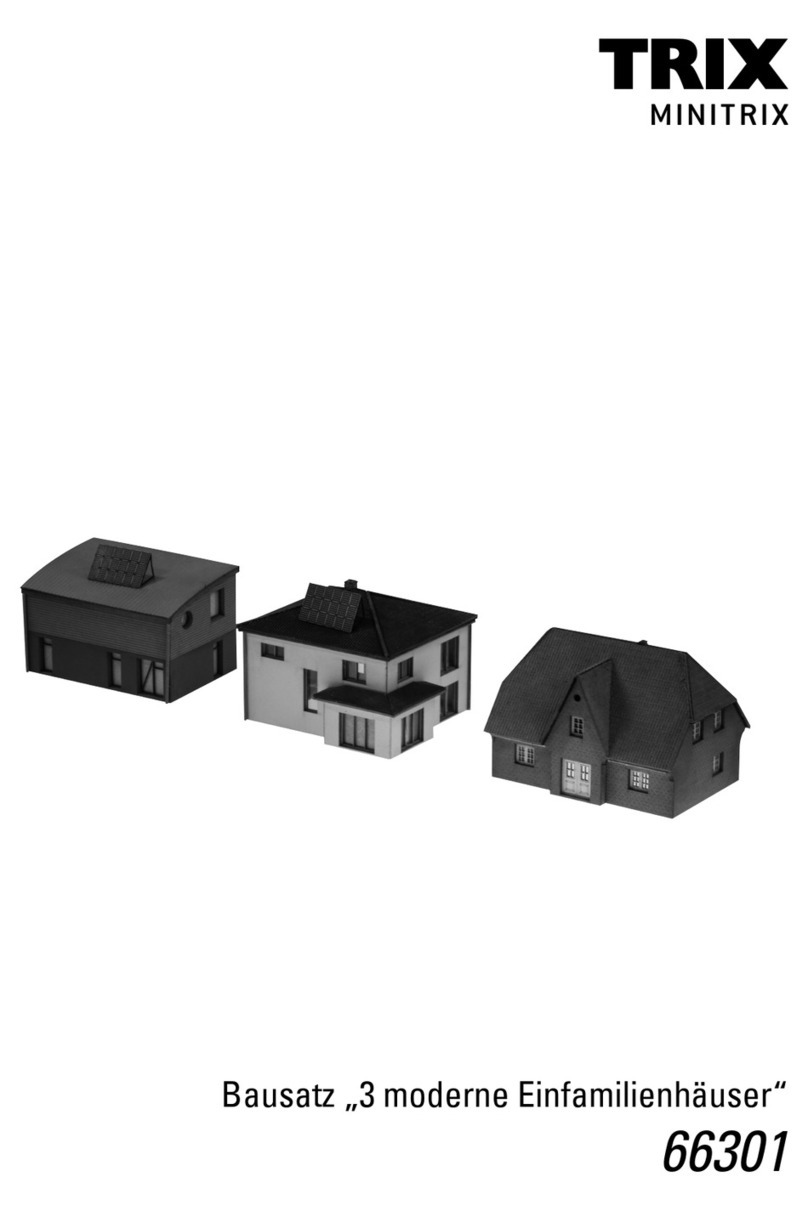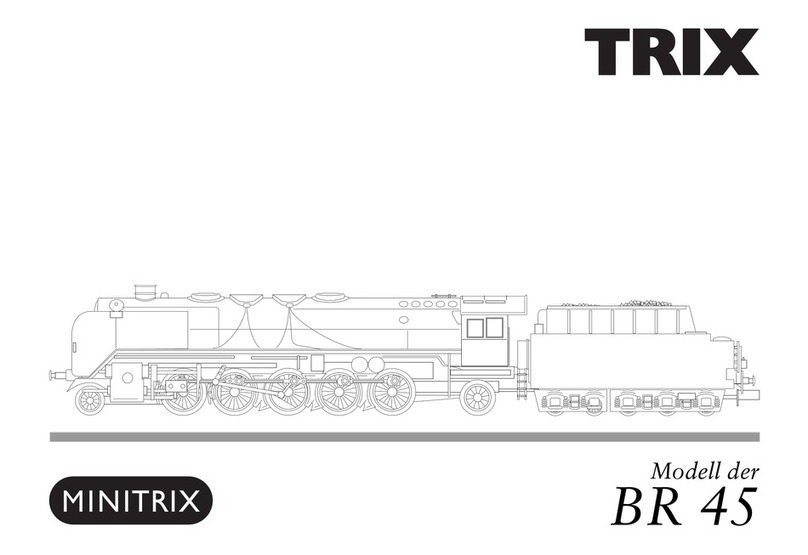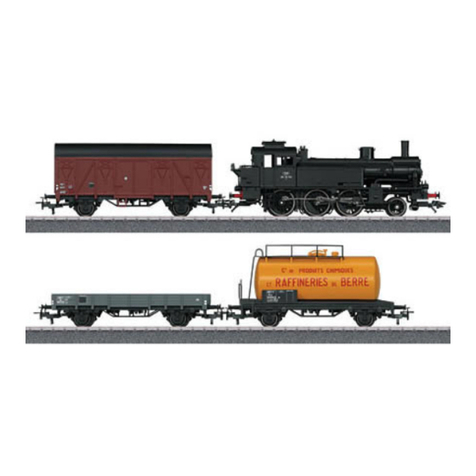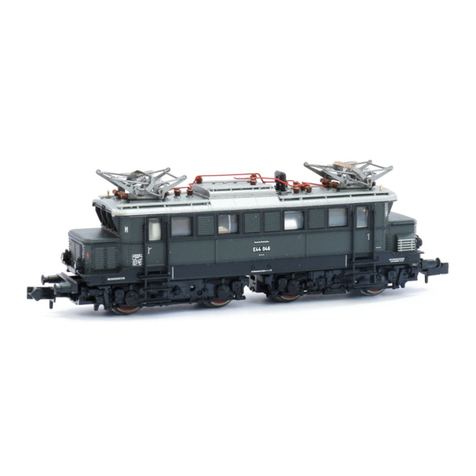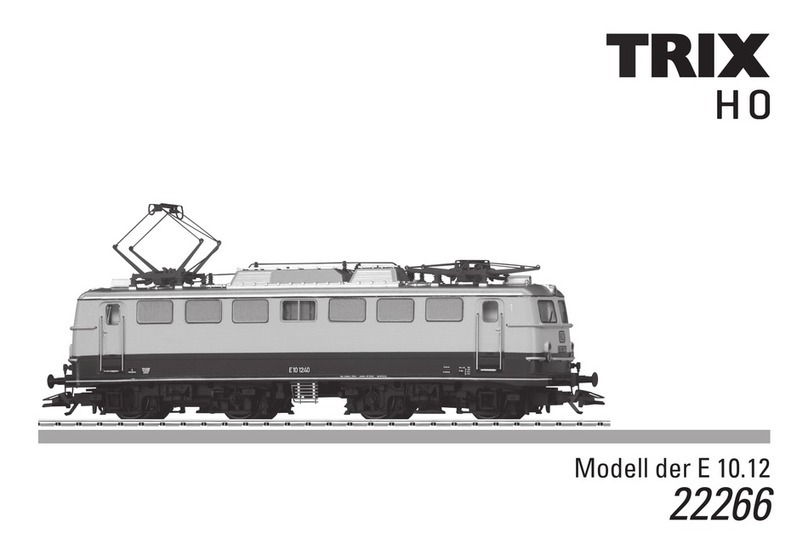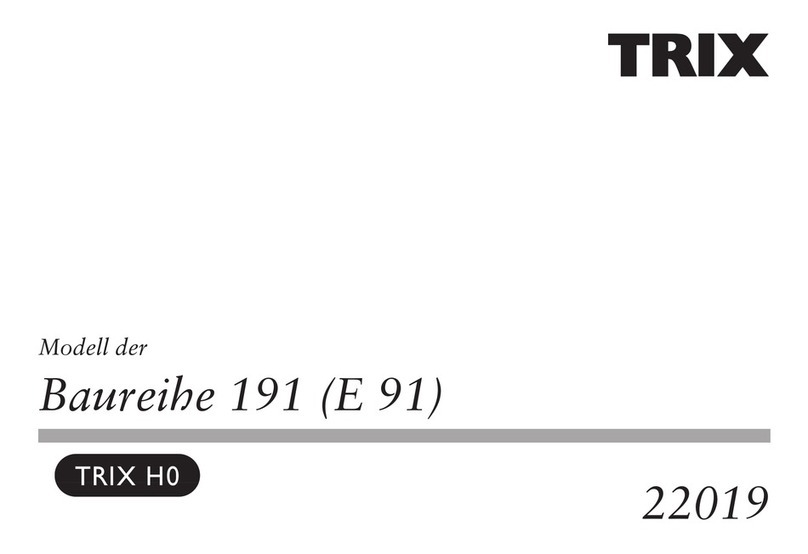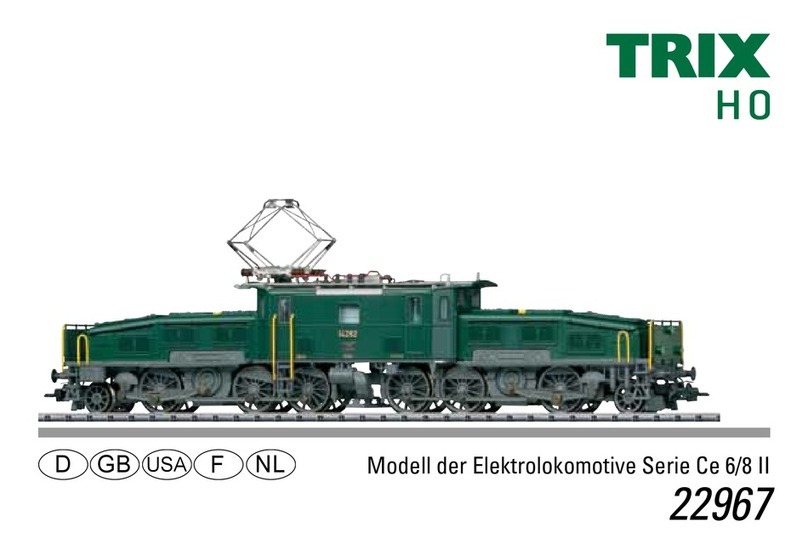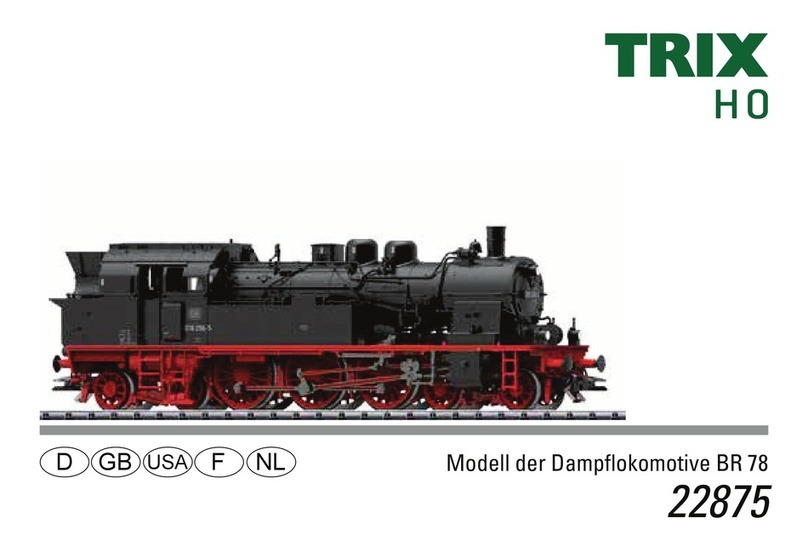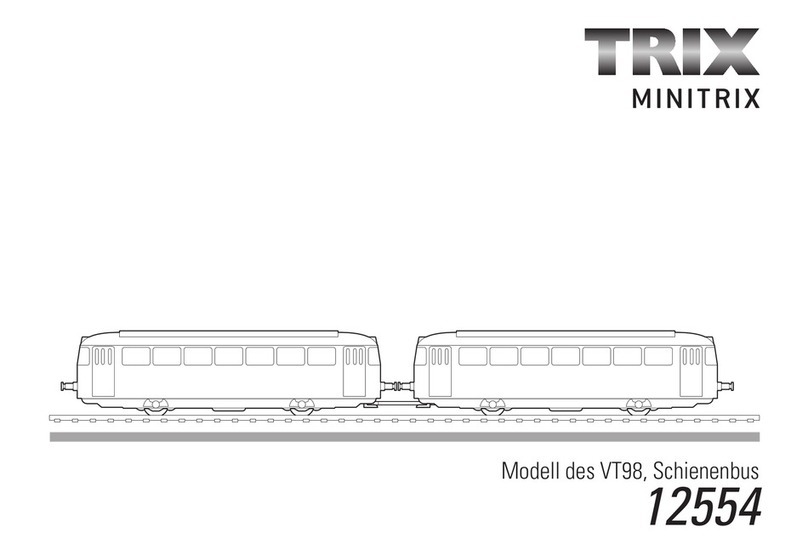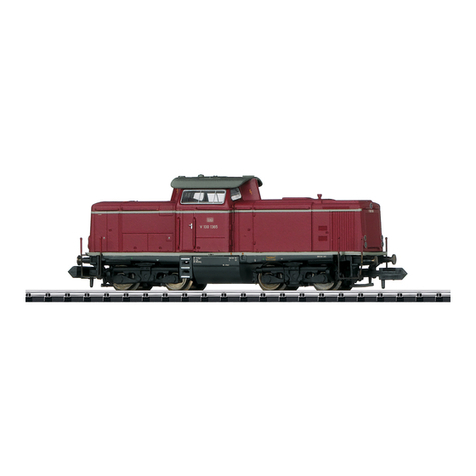5
Informations concernant la locomotive réelle
Entre 1910 et 1930, les lignes du chemin de fer suisse de la val-
lée des lacs, à proximité de Wildegg et de Beromünster, étaient
électrifiées sous 5,5 kV/25 Hz, vestige de l’époque du chemin de
fer privé. Avec la nationalisation en 1922, les CFF optèrent à la
fois pour la normalisation du courant de traction et l’acquisition
d’une nouvelle locomotive. Ainsi, les 3 machines De 6/6 livrées
en 1926 étaient déjà conçues pour le courant de traction normal
de 15 kV/16 2/3 Hz.
Le « crocodile de la vallée des lacs » porte bien son nom: La
construction du châssis correspond en grande partie à la célèbre
machine des CFF.
Deux groupes de roues motrices (ici sans roues porteuses) sup-
portent une caisse à 3 éléments. Les locomotives de la vallée des
lacs devant toutefois être plus souples et plus légères, on utilisa
des composants mécaniques adaptés issus de la petite locomo-
tive de manœuvre Ee 3/3 construite en parallèle. Chaque bogie
moteur est entraîné par un moteur via un arbre secondaire de ren-
voi et des bielles obliques, la puissance totale de 850 kW permet
une vitesse de 50 km/h. Caractéristiques de ces machines : les
énormes trappes de ventilation située du côté des appareils pour
le refroidissement des transformateurs et le pantographe unique.
Les trois petites crocodiles furent en service aux CFF jusqu‘en
1983, à partir des années 1950 essentiellement comme locomoti-
ves de manœuvre. Les locomotives 15302 et 15303 furent démolies
au printemps 1983. La locomotive 15301 fut reprise par le Oensin-
gen-Balsthal-Bahn, qui l’utilisa encore 10 ans pour la traction de
trains marchandises. L’unique locomotive conservée, la 15301, est
aujourd’hui entretenue par l’association « Seetalkrokodil 15301 ».
Informatie van het voorbeeld
De spoorlijnen van de Zwitserse Seetalbahn bij Wildegg
en Beromünster waren van 1910 tot 1930 geëlektrificeerd
met 5,5 kV/25 Hz, een overblijfsel uit de lokaalbaantijd. Met
de nationalisatie in 1922 besloot de SBB zowel tot stand-
aardisering van de stroomtoevoer als de aanschaf van
nieuwe locomotieven. Zo waren de in 1926 geleverde 3 ma-
chines De 6/6 reeds op de normale stroomvoorziening van
15 kV/16 2/3 Hz voorbereid.
De „Seetal-Krokodil“ draagt zijn naam met ere: de drijfwerk-
constructie komt overeen met die van de beroemde SBB-ma-
chine. Twee groepen drijfwielen (hier zonder voorloopwiel)
dragen een driedelige opbouw. Omdat de Seetal-locs echter
flexibeler en lichter moesten zijn, werden passende mecha-
nische onderdelen gebruikt van de tegelijkertijd gebouwde
kleine rangeerlocomotief Ee 3/3. Elk drijfstel wordt door een
motor aangedreven over een blinde as en drijfstangen. Het
gezamenlijke vermogen is 850 kW, waarmee 50 km/u mogelijk
is. Kenmerkend voor de machine zijn de grote luchtinlaten op
de apparatuurkant voor de koeling van de transformatoren
en de enkele stroomafnemer op het dak.
De drie kleine Krokodillen waren tot 1983 bij de SBB in ge-
bruik, sinds de jaren 50 voornamelijk als rangeerlocs. De lo-
comotieven 15302 en 15303 werden in het voorjaar van 1983
gesloopt. Locomotief 15301 ging naar de Oensingen-Salsthal-
Bahn waar hij nog eens tien jaar als goederenlocomotief
werd ingezet. De enige overgebleven locomotief 15301 wordt
nu beheerd door de vereniging „Seetalkrokodil 15301“.
